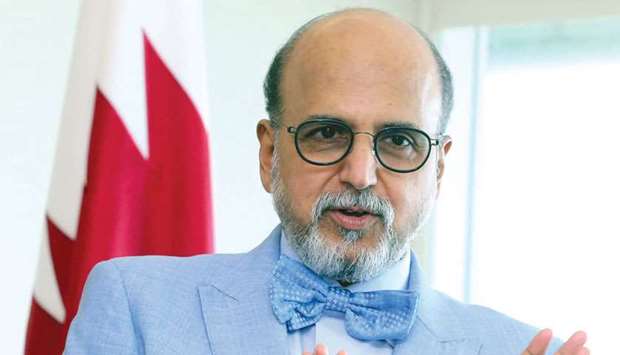Doha Bank seeks to maintain a stable loan-to-deposit ratio even as its lending remains relatively stable of late, according to Group CEO Dr R Seetharaman.
“Doha Bank’s lending has been relatively stable of late, although we are currently reviewing a number of potential assets. Whilst any growth on the asset side of the balance sheet can be accommodated from existing Qatari riyal funds, the bank seeks to maintain a stable loan to deposit ratio,” Seetharaman said in an interview with Gulf Times.
“Hence, as the asset side of the balance sheet adjusts, we look to adjust the liability side as well. Given the improving fundamentals of the market, these adjustments can be accommodated,” he said.
Seetharaman noted Doha Bank has been active in raising funds from the offshore markets; having recently completed a syndicated loan predominantly focusing on Asia-based banks as a means to increase the duration of its liabilities and diversify funding sources.
He said Doha Bank continues to monitor movements in the international bond markets following the Sovereign’s $12bn benchmark issue in April as an additional option, although funding from bond markets in recent times has been confined to private placements.
On the general perception that the loan-to-deposit (LDR) ratio of the Qatari banks is still not ideally placed, the Doha Bank CEO said, “The Qatari banking system has a sound and stable deposit base. This combined with improving fundamentals for the economy with respect to current account balance, fiscal position and GDP allows for a slightly higher LDR.”
The loan-to-deposit (LDR) in Qatar stood at 113.3% by end of July. While the loan to deposit ratio of Qatari banking system may be higher than some other countries it needs to be considered in the context of the market, Seetharaman noted. He stressed the need for banks to redefine their business models to adapt themselves to the digital ecosystem. Hence digital governance is the need of the hour.
Banks need to manage the change by redefining their business models and to manage various stake holders such as customers, the regulator and shareholders.
“The question that comes up is how can we regulate technology companies? Customers are information-centric and not location-centric. To adapt to the digital changes, either you need to be quick or dead. Realignment of resources will happen in the light of technology developments. Banks will end up as B2B models,” Seetharaman said.
On the “louder merger and takeover talks” being heard in the region, the Doha Bank CEO said, “Bank mergers are complex, given the large holdings. However, consolidation can happen between banks, if all stakeholders agree to it as the most feasible solution.”
In the region, there are some merger talks ongoing. In Qatar, there is a proposed merger between Barwa Bank and IBQ. In the UAE, Abu Dhabi Commercial Bank (ADCB) said it was in early merger talks with the Union National Bank and Al Hilal Bank.
Kuwait Finance house and Ahli United Bank merger talks are also underway, while National Bank of Oman and Bank Dhofar are expected to begin merger talks.
“A sustained period of low crude prices has caused the governments to re-calibrate budgets, as well as dip into state deposits. However, in recent times we are seeing a surge in oil prices.
“Banks have also faced pressure from higher compliance costs because of new accounting standards, technological changes and the introduction of the value added tax,” Dr Seetharaman noted.

Dr Seetharaman: Banks need to redefine their business models to adapt to the digital ecosystem. PICTURE: Jayan Orma
